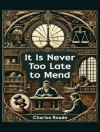Wenderholme, a compelling novel by Philip Gilbert Hamerton, intricately weaves themes of English rural life and societal change during the Victorian era. The narrative unfolds in the picturesque setting of the English countryside, where Hamerton’s lyrical prose captures both the beauty and the complexities of human relationships. The story revolves around the lives of the Wenderholme family, delving into their ambitions, struggles, and the shifting dynamics of their community, embodying the tensions between tradition and modernity. This rich tapestry of characters is adorned with Hamerton’s keen observations, making it a significant contribution to the social realist genre that flourished in his time. Philip Gilbert Hamerton, an artist and writer deeply influenced by his surroundings, wrote Wenderholme during a period of personal and professional reflection. His experiences as an art critic and his profound appreciation for the English landscape informed his vivid descriptions and character-driven storytelling. Hamerton was dedicated to capturing the essence of life in England, both as a painter and novelist, which is palpably evident in this work, where he intertwines his artistic vision with literary finesse. Wenderholme is not just a tale of rural life; it is a poignant exploration of human connections and societal flux, making it a must-read for those interested in 19th-century literature. Readers will find themselves enchanted by Hamerton’s articulate reflections on nature and society, while gaining insights into the historical milieu of England during a time of great transformation. Immerse yourself in this timeless narrative that resonates with both the heart and the mind.
Sobre el autor
Philip Gilbert Hamerton (1834–1894) was an English artist, art critic, author, and philosopher, whose literary works explored various subjects from art theory to social criticism. His 1869 novel ‘Wenderholme’ is a fine representation of his narrative skill and understanding of human character. Set in the rural landscapes of Yorkshire, the book manifests Hamerton’s deep appreciation for nature, a theme recurrent in his broader oeuvre. Hamerton’s literary style often blended reflective essays and fictional narratives, incorporating his artistic sensibilities and intellectual rigor. Although ‘Wenderholme’ remains amongst his lesser-known works compared to ‘The Intellectual Life’ (1873) and ‘Painting in France, After the Decline of Classicism’ (1869), it reflects his enduring commitment to exploring the interplay between environment and personal development. His contributions have been noted for their earnest prose and insightful consideration of contemporary culture and aesthetics. Hamerton’s works resonate with a 19th-century readership navigating the tensions of modernity and tradition, and his thoughtful engagement with art and societal issues remains of scholarly interest. Hamerton was also a proficient etcher and his artistic texts, such as ‘Etching and Etchers’ (1868), were instrumental in popularizing etching as a respected art form in Victorian England.












